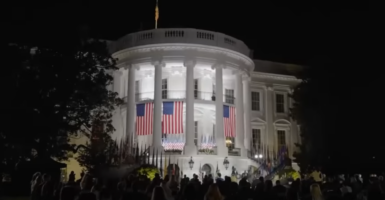Data Shows Low-Income Families Benefit Most From School Choice
School choice has been on the minds of many. Parents are asking for it, wanting to have a bigger say in their child’s education. Politicians are finally starting to back it, seeking legislation that would allow families to take their public-school tax funds with them to where they see the best fit for their child. The prevailing wisdom, or at least thought from the public-school side of the ledger, would have you believe i

School choice has been on the minds of many. Parents are asking for it, wanting to have a bigger say in their child’s education. Politicians are finally starting to back it, seeking legislation that would allow families to take their public-school tax funds with them to where they see the best fit for their child. The prevailing wisdom, or at least thought from the public-school side of the ledger, would have you believe is that school choice benefits only the wealthy and comes at the expense of those low-income families. That, as you will soon see, is very much a fallacy.
The idea behind school choice is simple: Take educational tax dollars to the school of one’s choosing. Freedom to allow parents to pursue educational excellence for their kids. The main point being, it would make no difference where a family is located geographically as it would make no difference where they sit on the socioeconomic scale. Low-income families with school choice would finally have options.
As more and more spoke out about wanting school choice, opponents of said choice came out to defend this by claiming how harmful it would be to the educational system. In Arizona, this argument was used to stop the state from expanding its education savings account program in 2018. Since that time, though, more and more evidence has shown that school choice does not only favor the wealthy, but it also has had a profound effect on low-income families.
In 2019, the Urban Institute updated its 2017 report on the students who participated in the Florida Tax Credit (FTC) scholarship program. The FTC is the country’s largest private school choice program and benefits many low-income families. The FTC annually provides more than 100,000 scholarships that families can use toward tuition for participating private schools. What the Urban Institute found out in 2017 and reconfirmed in 2019 was that low-income “students who participated in the FTC program at any point in their academic careers were more likely to enroll in Florida colleges and were slightly more likely to graduate than students who did not participate.”
Back to Arizona, they too are finding out that their school choice education savings account program – Empowerment Scholarship Account (ESA) program – is making a difference to those low-income families who need it most. School choice is now offering opportunities for kids who may have never been afforded that luxury. Looking at Arizona’s numbers more closely, the findings are encouraging. Here is what they show:
- Median private school tuition is covered 100% by the ESA. This means private schools are finally within reach of low-income families.
- Contrary to popular belief, students who receive an ESA from low-income and low-performing school districts is proportionally similar overall to those students in public schools who don’t suffer the same background. The ESAs are showing they generate equal funding for students, regardless of their economic status.
- There are 10 school districts in Arizona where the ESA is most popular, and these districts are socioeconomically disadvantaged by a large margin. Of those 10 districts, three have the largest concentration of ESA students. The child poverty rate in those three districts is more than double the state average.
- Hundreds of students on Native American reservations are served by the ESA. These reservations can see public school spending topping $16,000 a year, but even with that, these students are trapped in districts and schools that have been rated a D or F by the Arizona Board of Education.
Of course, the biggest concern surrounding Arizona’s ESA (or any state for that matter) is whether the school choice system is set to do more damage to low-income families while giving an even larger advantage to those affluent families. Per a 2017 EdChoice report, it was found that private school tuitions and fees in the state reached as high as $29,700 annually, with some of the state’s private high schools going well over that. Compare that with the ESA award for non-special education or non-kindergarten students of $6,148 and you can see where that concern comes from.
But what that report ultimately showed was that while some private school tuitions did reach that lofty price, those were mainly Arizona outliers. What they saw instead was that Arizona’s median tuition rate for private schools, in 2017, was $5,675. Even if you added the inflation rate, it would jump tuition to around $6,139, which is virtually identical to what the average ESA scholarship brings in. The playing field is level for low-income families who wish for school choice.
School choice is on the rise and as the numbers show, low-income families benefit greatly from it. Public school districts will continue to fight, claiming taking public school dollars away will only hurt those students who stay in their public schools. Others claim that if public schools wish to retain those families looking for school choice, they need to improve what’s being offered. It’s finally time to start thinking about the children.



